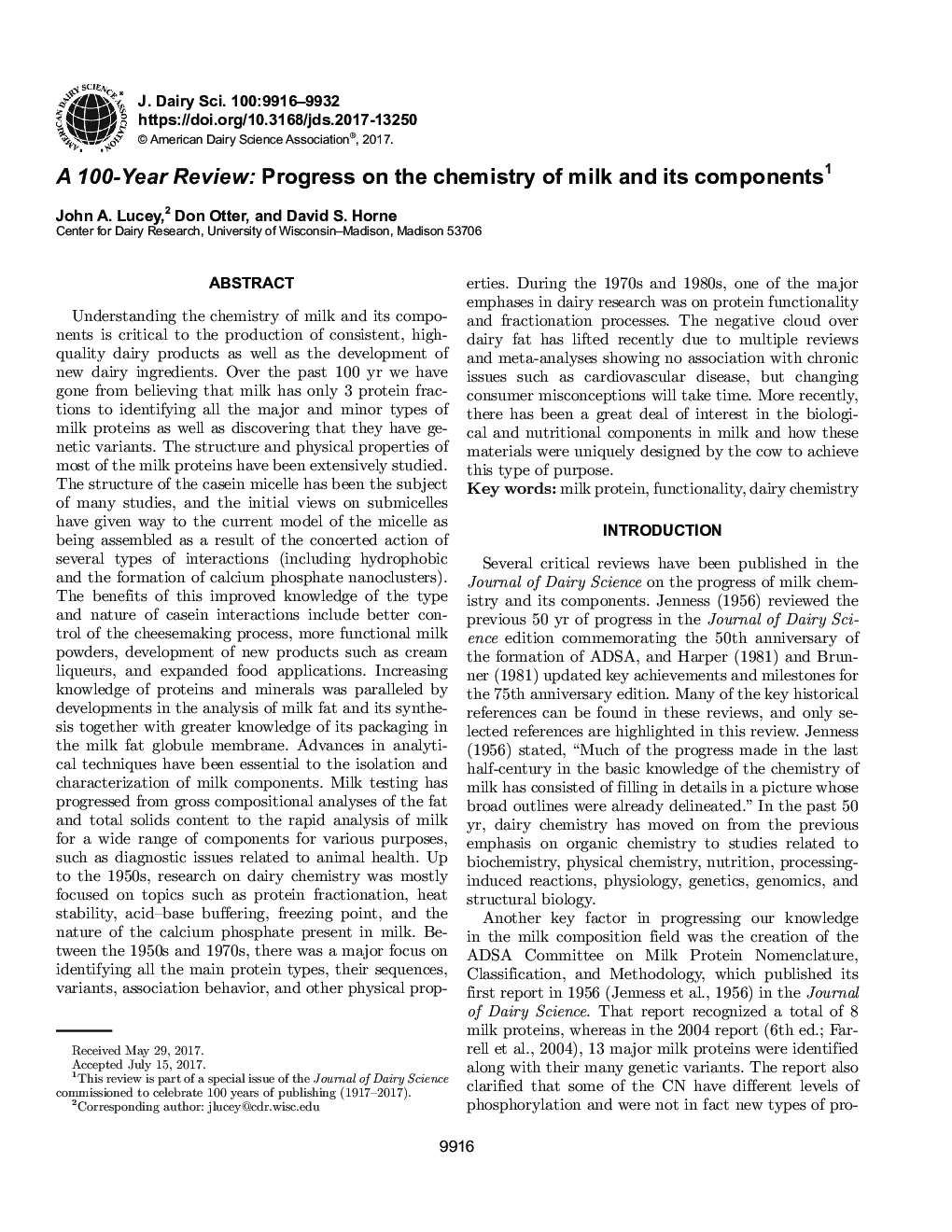| Article ID | Journal | Published Year | Pages | File Type |
|---|---|---|---|---|
| 8501740 | Journal of Dairy Science | 2017 | 17 Pages |
Abstract
Understanding the chemistry of milk and its components is critical to the production of consistent, high-quality dairy products as well as the development of new dairy ingredients. Over the past 100 yr we have gone from believing that milk has only 3 protein fractions to identifying all the major and minor types of milk proteins as well as discovering that they have genetic variants. The structure and physical properties of most of the milk proteins have been extensively studied. The structure of the casein micelle has been the subject of many studies, and the initial views on submicelles have given way to the current model of the micelle as being assembled as a result of the concerted action of several types of interactions (including hydrophobic and the formation of calcium phosphate nanoclusters). The benefits of this improved knowledge of the type and nature of casein interactions include better control of the cheesemaking process, more functional milk powders, development of new products such as cream liqueurs, and expanded food applications. Increasing knowledge of proteins and minerals was paralleled by developments in the analysis of milk fat and its synthesis together with greater knowledge of its packaging in the milk fat globule membrane. Advances in analytical techniques have been essential to the isolation and characterization of milk components. Milk testing has progressed from gross compositional analyses of the fat and total solids content to the rapid analysis of milk for a wide range of components for various purposes, such as diagnostic issues related to animal health. Up to the 1950s, research on dairy chemistry was mostly focused on topics such as protein fractionation, heat stability, acid-base buffering, freezing point, and the nature of the calcium phosphate present in milk. Between the 1950s and 1970s, there was a major focus on identifying all the main protein types, their sequences, variants, association behavior, and other physical properties. During the 1970s and 1980s, one of the major emphases in dairy research was on protein functionality and fractionation processes. The negative cloud over dairy fat has lifted recently due to multiple reviews and meta-analyses showing no association with chronic issues such as cardiovascular disease, but changing consumer misconceptions will take time. More recently, there has been a great deal of interest in the biological and nutritional components in milk and how these materials were uniquely designed by the cow to achieve this type of purpose.
Keywords
Related Topics
Life Sciences
Agricultural and Biological Sciences
Animal Science and Zoology
Authors
John A. Lucey, Don Otter, David S. Horne,
